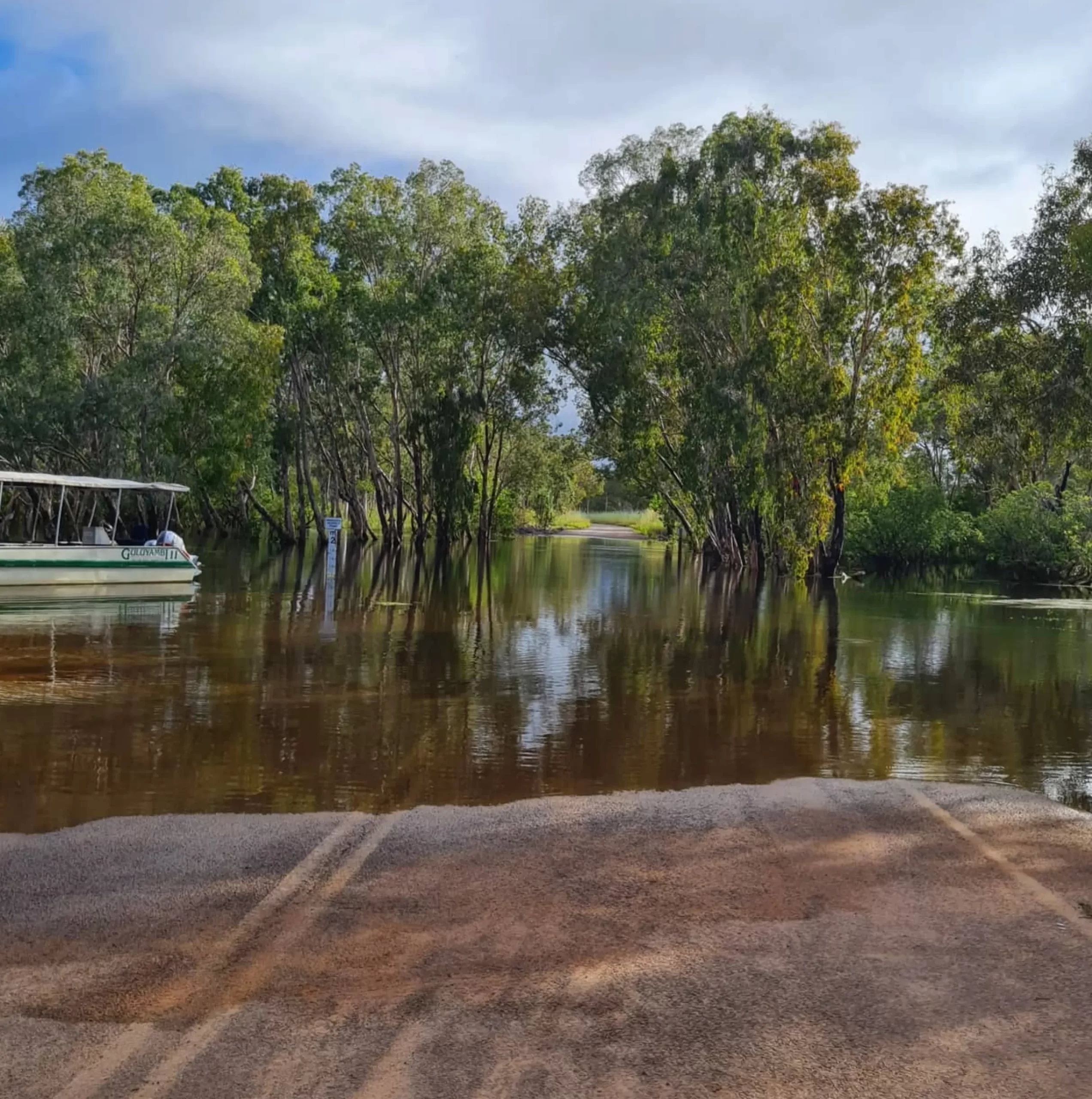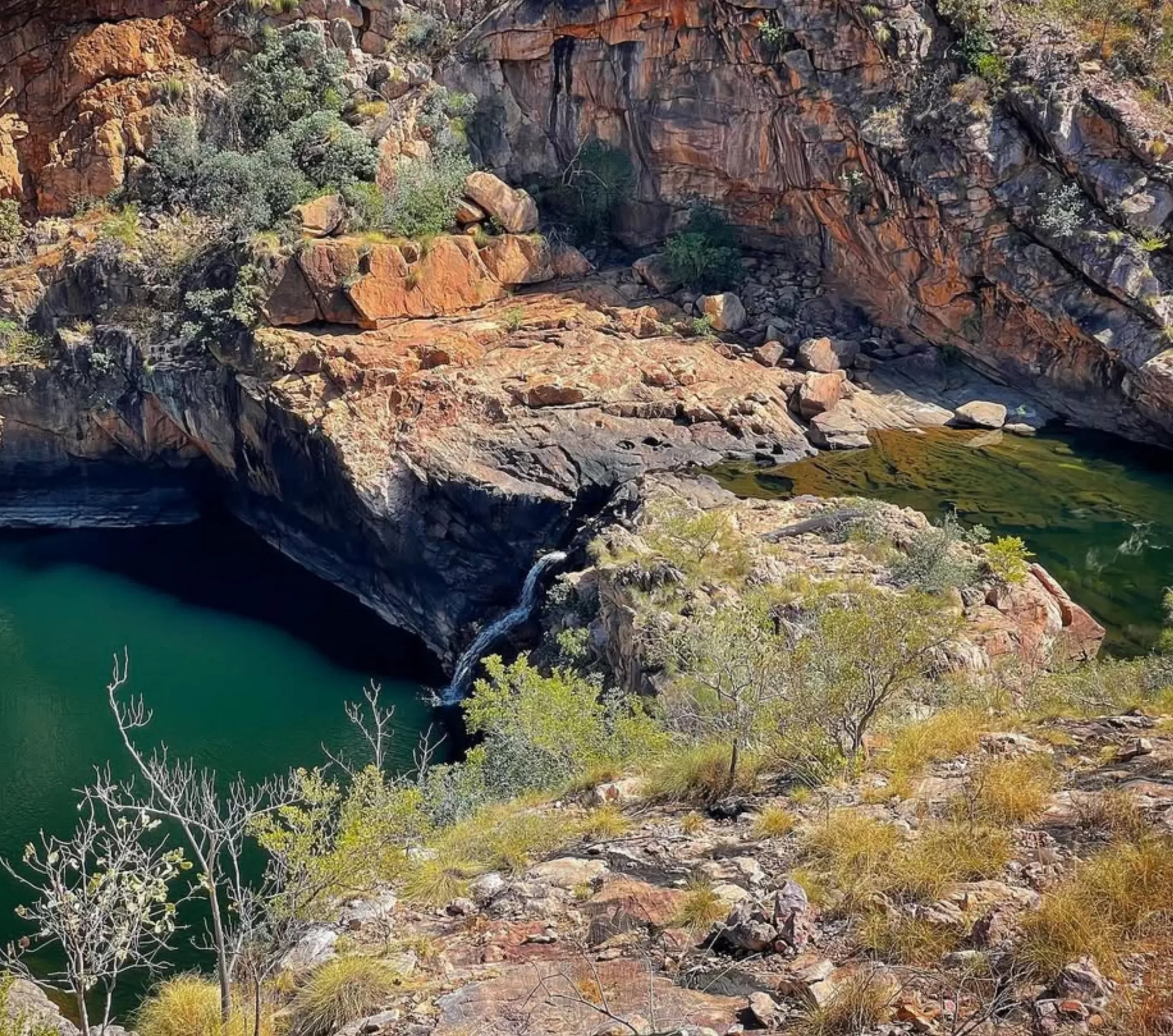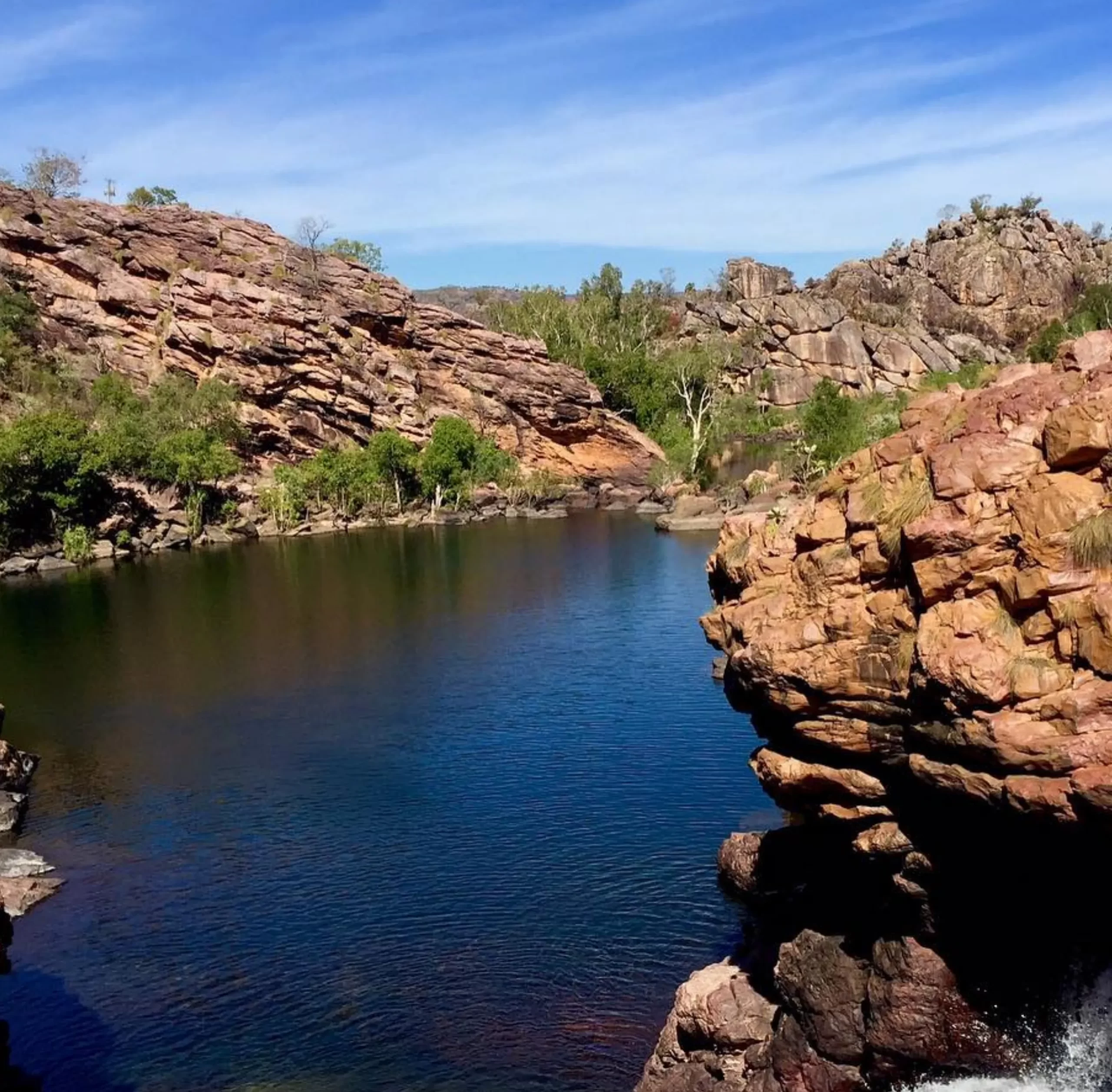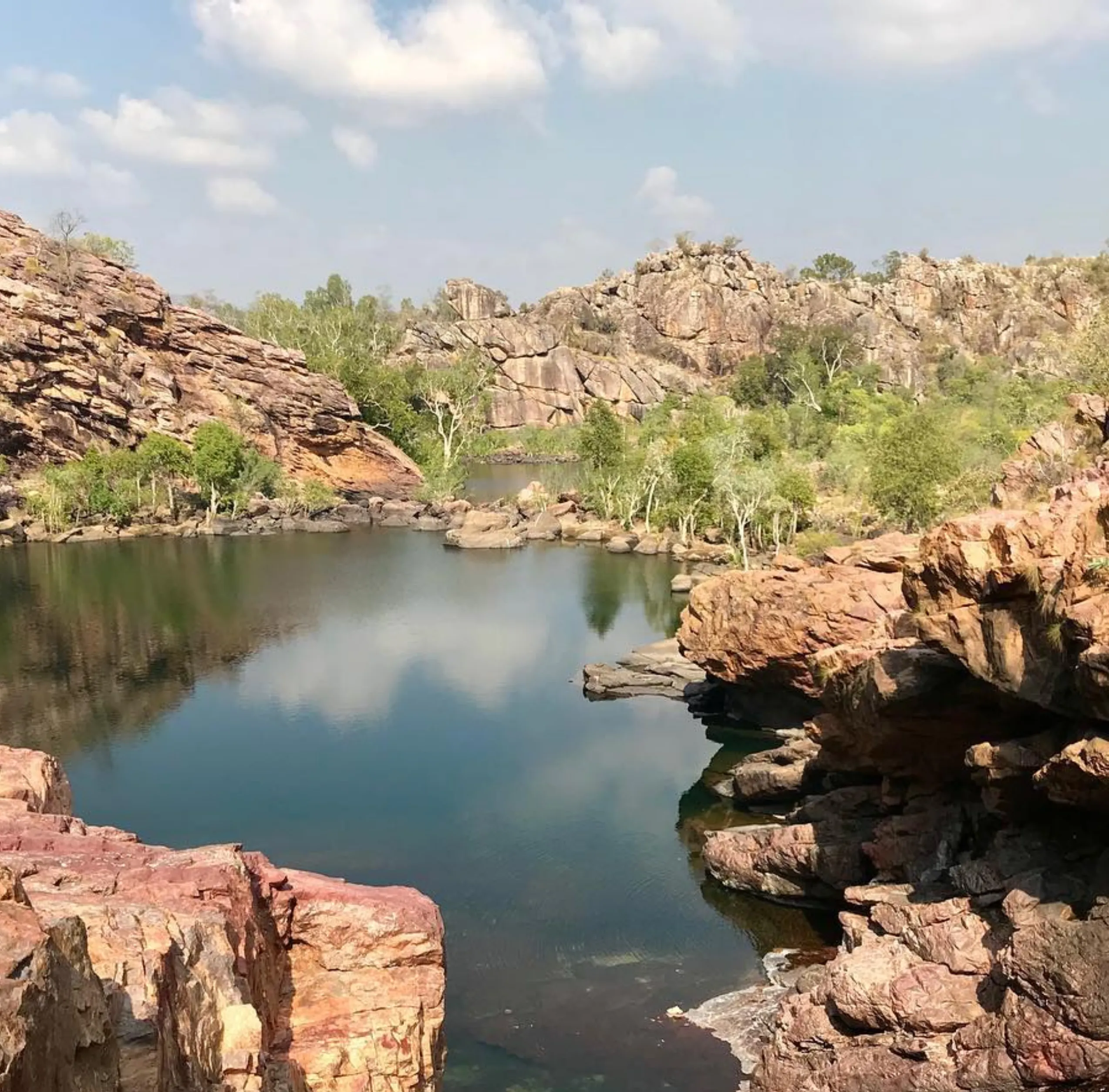Kakadu National Park is a beautiful natural wonder in Australia’s Northern Territory, famous for its many ecosystems and wildlife. The park’s landscape, including floodplains, monsoon forest pockets, lowland forests and rock outcrops, is home to many species. From saltwater crocs in the Yellow Water Billabong to agile wallabies in the southern hills, Kakadu is a nature lover’s and wildlife enthusiast’s paradise.
Kakadu’s Ecosystems and Their Creatures
Wetlands: A Bird and Reptile Haven

The wetlands of Kakadu, including Magela Creek, Mary River and Yellow Water Billabong, are alive with life. These areas, with alluvial soils and hydrological features, are home to freshwater fish like barramundi and many plant species like spike rush and water lilies. During the wet season, the water levels rise, and these areas become vibrant ecosystems.
Woodlands: Mammals and Marsupials
The woodlands and open savannahs are home to agile wallabies, brown bandicoots, and Black Wallaroos. In the understorey, native species like sugar gliders and Short-eared Rock Wallabies live, while the kapok tree provides excellent shelter.
Monsoon Forests and Moist Gorges

Isolated monsoon forest pockets in areas like Koolpin Gorge and moist gorges are refuges for species that live in humid conditions. These areas are often rich in endemic plants and many frog species, including the northern bullfrog and marbled frog, which can be heard singing after annual rainfall.
Rivers and Billabongs: Aquatic Havens

Rivers like the South Alligator and Alligator Rivers and iconic sites like Anbangbang Billabong are vital for aquatic life. These waterways support estuarine crocs (saltwater crocodiles) and many native fish species.
Birdlife: Kakadu’s Birds
Iconic Species: Jabirus, Brolgas and Magpie Geese
Kakadu has over 280 species of birds. Iconic species like jabiru, magpie geese and brolgas can be seen wading in the floodplains or perched in big trees.
Migratory Birds and Seasonal Visitors
The wetlands are a stopover for migratory birds during the wet and dry seasons. Yellow Water Cruises are the best way to see these bird travellers.
Birdwatching in Kakadu
For the best experience, visit during the dry season, when the water levels are low, and the birds congregate around the remaining water sources, such as Yellow Water Billabong.
Reptiles: Kings of the Wetlands
Saltwater Crocodiles: The Top Predators
Saltwater crocodiles (estuarine crocodiles) are one of Kakadu’s most well-known residents. They regulate their body temperature by basking on riverbanks.
Freshwater Crocodiles and Other Reptiles
The park includes freshwater crocodiles, lizards, and many other reptiles. Crocodiles can be safely viewed from designated viewing areas like Cahills Crossing.
Mammals: Nighttime Wanderers and Daytime Foragers
Wallabies, Bandicoots and more
Kakadu’s mammals include nocturnal species like sugar gliders and bandicoots that forage on the ground. Agile Wallabies and Black Wallaroos can be seen in the southern hills.
Rare and Endangered Mammals
The intact landscape provides habitat for species like the Short-eared Rock Wallaby and other rare marsupials that rely on fragile floodplains and patches of monsoon forest.
Wildlife Conservation
Indigenous Knowledge in Wildlife Management

Kakadu’s Aboriginal land and indigenous communities, including those from Arnhem Land, have been important in maintaining the park’s biodiversity through wet season hunting.
Threats to Kakadu’s Animals and Habitats
Feral buffalo and extreme weather events are the main threats to Kakadu’s ecosystems.
Conservation Initiatives in Action
Parks Australia is working to address these threats through land use inquiry, archaeological site protection and ecosystem restoration of coastal waters and fragile floodplains.
See Kakadu’s Wildlife for Yourself
Best Time to See Wildlife
The dry season is the best time to see wildlife as animals congregate around water.
Tours and Flights
Join a Yellow Water Cruise or take a scenic flight to see the park’s rugged landscapes, Nourlangie Rock and Muirella Park.
Responsible Wildlife Watching
Follow park use fees, camp in designated areas and respect Aboriginal hunters and their culture.
Kakadu’s Biodiversity Legacy

Kakadu has wildlife, landscape, and culture. It has a history of crocodile hunting, native species thriving, and biodiversity despite climate and human impacts. Rock shelters, rock art, and grasses—you’ll be amazed.
FAQ
When is the best time to see wildlife in Kakadu?
The dry season May to October is the best time to see wildlife as animals congregate around remaining waterholes making them easier to spot.
What are the must-see animals in Kakadu?
Saltwater crocodiles, jabirus, magpie geese, agile wallabies and Short-eared Rock Wallabies.
Are there guided tours in Kakadu National Park?
Yes, there are many guided 2 day Kakadu tours including Yellow Water Cruises and scenic flights which are great ways to see Kakadu’s wildlife and landscapes.
How do Aboriginal communities help with wildlife conservation in Kakadu?
Indigenous communities from Arnhem Land contribute through traditional practices such as wet season hunting and land management based on their deep ecological knowledge.
What’s in place to protect Kakadu’s ecosystems?
Parks Australia controls invasive species, protects fragile floodplains and ensures sustainable park use to maintain Kakadu’s biodiversity.